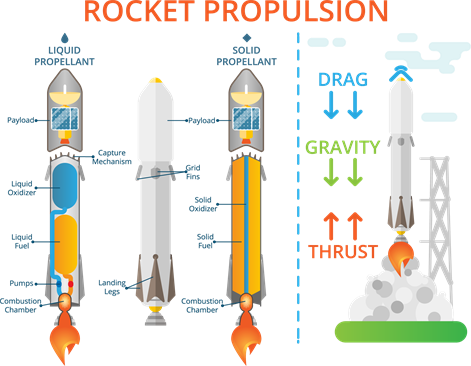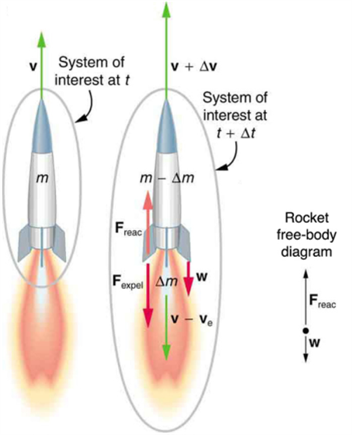PDF chapter test TRY NOW
In the previous sections, we have learned Conservation of linear momentum law and Newton's III law of motion. In this section, we will discuss one of the practical applications of these laws in detail.
The propulsion of rockets is based on the Conservation of linear momentum law and Newton's III law of motion.
Newton's third law:
It states that 'for every action, there is an equal and opposite reaction'. They always act on two different bodies.
Principle of conservation of linear momentum:
There is no change in the linear momentum of a system of bodies as long as no net external force acts on them.
Rocket propulsion:
Rockets are filled with fuel (either in liquid-state or solid-state) in the propellant tank. This fuel is burnt when the rocket is fired, and the hot gas is ejected with high speed from the rocket's nozzle, producing a huge momentum.
An equal and opposite reaction force is generated in the combustion chamber to balance this momentum, making the rocket project forward.

Rocket Propulsion
While in motion, the rocket's mass constantly decreases until the fuel is fully burnt out. Since no net external force acting on the system, the linear momentum of the system is conserved.
The rocket's mass decreases with altitude, resulting in the progressive increase in velocity of the rocket. At one particular stage, it reaches a velocity, which is adequate to just escape from the Earth's gravitational pull. This velocity is known as Escape velocity.

Workingof Rocket
Summary:
- The acceleration of a rocket depends on three important factors: Exhaust velocity, the rate the exhaust is ejected, and the mass of the rocket.
- To achieve the high speeds required to hop continents, obtain orbit or escape Earth's gravity altogether, the rocket's mass other than fuel must be as small as possible.
